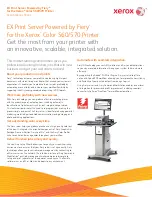
43
TERMINAL SERVERS
4.2 Configuring Terminal Server Parameters
The initial setup of the IP environment in the Terminal Server involves
several key steps:
• Defining IP and/or LAT parameters—This involves the configuration of
the basic IP and/or LAT parameters of the Server’s network port. For IP
use, the IP address, subnet mask, gateway, DNS server need to be defined.
For LAT, the Terminal Server is ready immediately.
• Defining server wide characteristics—This involves Password enable,
authentication, Inactivity, ID-String, Broadcast.
• Defining port characteristics—This involves setting the access, speed,
flow control, signals, messages, Break, and a password.
• Defining session characteristics—This includes definition of the default
protocol, dedication, session-limits, auto-connect. For Telnet sessions
specifically, there is the definition of: CR translation, binary translation,
special characters, and for LAT sessions there are settings of groups,
queues, and services.
4.3.1 B
ASIC
IP S
ETUP
The following example illustrates the basic IP setup of the Terminal Server:
1. Local> CHANGE INTERNET ADDRESS 111.122.133.144
2. Local> CHANGE INTERNET MASK 255.255.255.0
3. Local> CHANGE INTERNET GATEWAY 111.122.133.155
NETWORK ANY
Figure 4-4. Basic IP Setup of a Terminal Server.
Step 1: Defines the IP Address
Statement 1 defines the IP address of the Terminal Server.
(In this example, 111.122.133.144).
Summary of Contents for LE2101A-BT-R2
Page 2: ......
















































